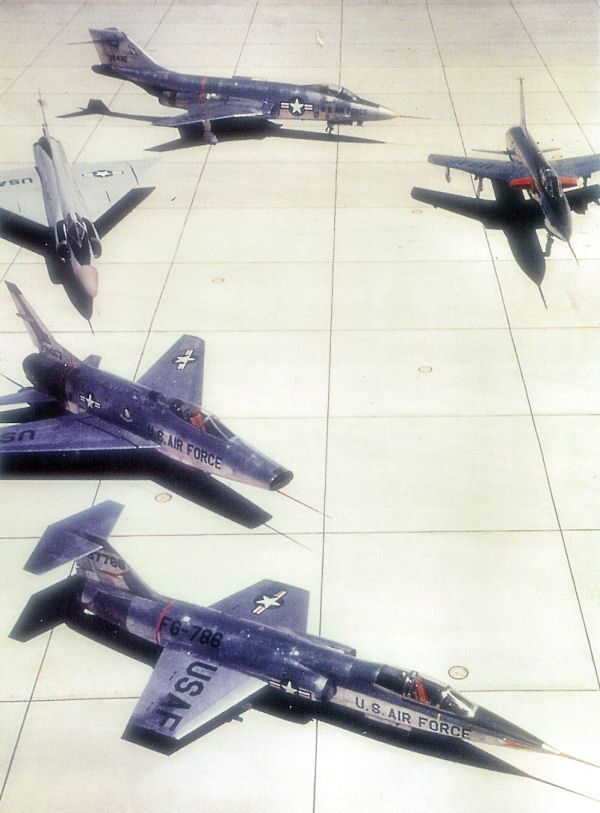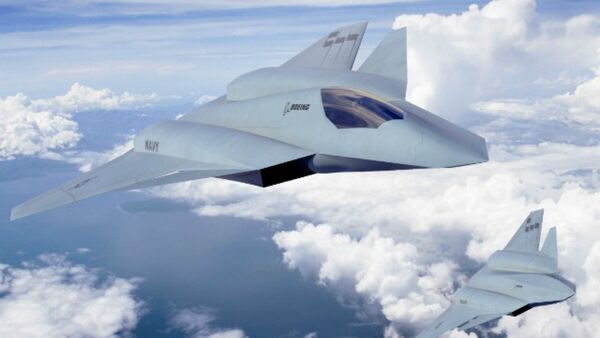While Lockheed Martin’s F-22 Raptor and F-35 Lightning II stealth jets are nowhere near the end of their service with the US Air Force, the military branch is already looking forward to what will come after them. The program, dubbed Next Generation Air Dominance (NGAD), will seek to create not one model of super-jet, but rather a “family of systems,” each bringing different strengths to the battlefield.
This is a radical departure from what the Air Force was thinking just a few years ago. When the Air Force performed its “Air Superiority 2030” study in 2016, the service envisioned a sixth generation superjet combining various technologies pioneered separately into a single platform, much like how the F-35 was produced.
Last year, the Pentagon sought $504 million for the NGAD program, with Brig. Gen. Alexus Grynkewich, deputy director of global operations at the Pentagon and lead chief of strategic planning for the Air Superiority 2030 study, telling Military.com the future battlefield was "about bringing a network to bear, and attributes [like penetrating counter air] needs in terms of range, persistence, survivability [and] lethality.” Inside Defense noted at the time the Air Force intends to pump $9.8 billion into research for NGAD over the next five years.
“We’ve got to kill the major defense acquisition program as it is today,” Assistant Secretary of the Air Force for Acquisition, Technology and Logistics Will Roper told Breaking Defense in April, “and replace it with something that looks more like the Century Series development of the early Air Force.”
In an interview with Defense News published Monday, Roper said, that “based on what industry thinks they can do and what my team will tell me, we will need to set a cadence of how fast we think we build a new airplane from scratch. Right now, my estimate is five years. I may be wrong. I’m hoping we can get faster than that - I think that will be insufficient in the long term [to meet future threats] - but five years is so much better than where we are now with normal acquisition.”
The “Digital Century Series” envisioned by Roper is a callback to the 1950s and the Air Force’s first generation of true supersonic jet fighters. In the aftermath of the Korean War, in which the newly formed Air Force met its match against Soviet MiG-15 fighters, the service sought to quickly put a slew of aviation technology breakthroughs into the air just as soon as they were made. The result was that in five years’ time, the Air Force fielded six new fighters built by five different manufacturers.

Each jet specialized in something new: the F-100 Super Sabre was the USAF’s first fighter capable of reaching Mach 1 in level flight; the F-101 Voodoo broke 1,000 mph; the F-102 Delta Dagger and F-106 Delta Dart incorporated new high-speed airframe designs and were the first to field nuclear-tipped anti-air missiles; the F-104 Starfighter was the first capable of sustained Mach 2 flight.
On the other hand, the planes all had their failures, too. The F-100 had a tendency to crash in landing; the F-104 was nicknamed “the missile with the man in it” and had a pathetically short range; half of all F-105s ever built were shot down in the skies over Vietnam, and the plane was withdrawn from service completely.
“All the Century aircraft weren’t successful,” Roper acknowledged, “but enough were.”
The end result was that, by the late 1960s, the Air Force had solidified the technologies new to the 1950s and rapidly advanced them, making powerful aircraft like the F-15 Eagle and F-16 Fighting Falcon possible, which are still in use today.
However, that same dynamic is also what created the present problem: the myriad defense firms of the postwar era began buying each other out as new technologies required more research and testing and the costs of doing business grew ever higher. By the end of the Cold War, a few core firms - Lockheed Martin, Boeing and Northrop Grumman - stood head and shoulders above the rest. Lockheed Martin has produced both of the Air Force’s fifth-generation jets: the F-22 and F-35.
The result in the F-35’s case is an abhorrently expensive plane with so many problems it can barely fly and which requires extensive updates just to catch up with tech advancements since its designing, such that the Pentagon doesn’t even foresee its use in combat as much more than “quarterback” coordination of other, older planes it was intended to replace.
But Roper said his concern isn’t just quickly maturing new technologies - it’s keeping US adversaries like Russia and China off-balance, too. “How do you deal with a threat if you don’t know what the future technology is? Be the threat - always have a new airplane coming out,” he told Defense News.
China has studied US methods and tools for making war since the 1990s, drawing lessons from Operation Desert Storm and the 2003 invasion of Iraq, the US invasion of Afghanistan and others, adapting those techniques for their own use but also drafting a plan for how to fight a war against a technologically superior foe like the US. With a plane like the F-35, which took decades to move from drawing board to prototype to production to operational use, Beijing has had just as long to study the plane, learn its weaknesses and come up with a counter strategy for exploiting them.
However, Richard Aboulafia, an aerospace analyst with the Teal Group, cautioned that perhaps Roper was bending the stick too far in the opposite direction, which might result in just producing new planes but not advancing tech as quickly as the Air Force hopes.
“With the F-35, we had too much [emphasis on] systems and not enough [on the] air vehicle. Maybe this is going too far in the other direction,” he told Defense News. “Isn’t the truth somewhere in between where you have two or three air vehicles but a greater resource allocation for systems? In other words, the truth isn’t the F-35 and the truth isn’t the Century Series. Can’t we just think in terms of something in between, a sensible compromise?”

